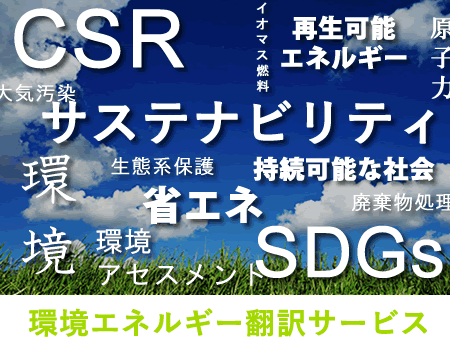翻訳サンプル1
注:下記は国際原子力機関が2004年に発表した「Radiation, People and the Environment」を弊社で独自に翻訳したものです。
Introduction
Radiation is a fact of life. We live in a world in which radiation is naturally present everywhere. Light and heat from nuclear reactions in the Sun are essential to our existence. Radioactive materials occur naturally throughout the environment, and our bodies contain radioactive material such as carbon-14,potassium-40 and polonium-210 quite naturally. AII life on Earth has evolved in the presence of this radiation.
はじめに
放射線は身の回りに存在しています。私達は、いたるところに放射線が自然に存在している世界で生きています。太陽の核反応によって放出される光と熱は、私達が生存するために不可欠なものです。放射性物質が環境全体にわたって自然に存在し、私達の体内にも、炭素14、カリウム40、ポロニウム210などの放射性物質がごく自然に含まれています。地球上のすべての生物は、この放射線の存在下で進化を遂げてきました。
Benefits and risks
The benefits and risks of any practice involving radiation need to be established, so that an informed judgement can be made on their use, and any risks minimized. The discovery of ionizing radiation and radioactive materials has led to dramatic advances in medical diagnosis and treatment, and they are used for a wide range of procedures in industry, agriculture, and research. Nevertheless, they can be harmful to human beings, and people must be protected from unnecessary or excessive exposures. 80 in circumstances that we can control, we need to make a careful balance between the benefits and the risks of the procedures that expose people to radiation.
恩恵と危険性
放射線を伴うあらゆる手法の恩恵と危険性を立証することによって、放射線の利用について十分な情報に基づいた判断を下し、危険性を最小限に抑えられるようにする必要があります。電離放射線と放射性物質の発見により、医学的な診断と治療に劇的な進歩がもたらされ、工業、農業および研究の分野でも様々な処置に使用されています。とはいうものの、人に害を与える可能性があるので、不必要な被曝や過剰な被曝を防がなければなりません。従って、コントロール可能な環境下では、人々が放射線にさらされる処置の恩恵と危険性との間で慎重にバランスを取る必要があります。




